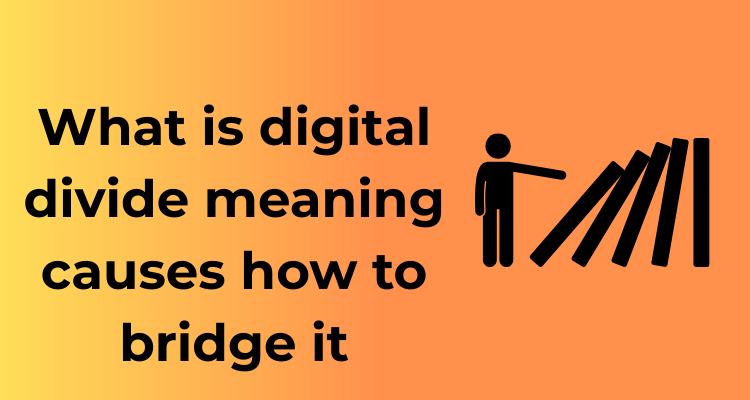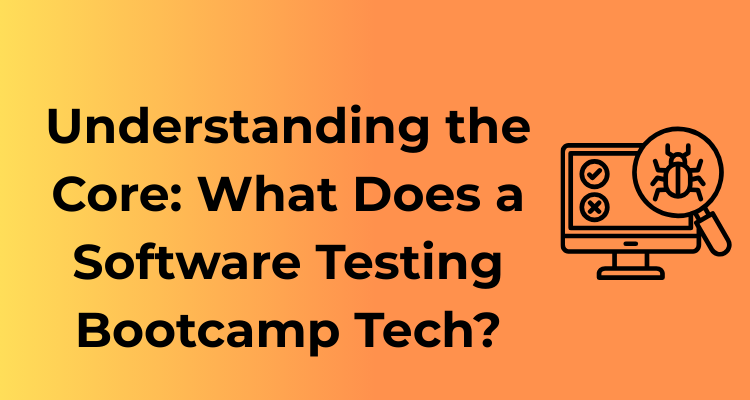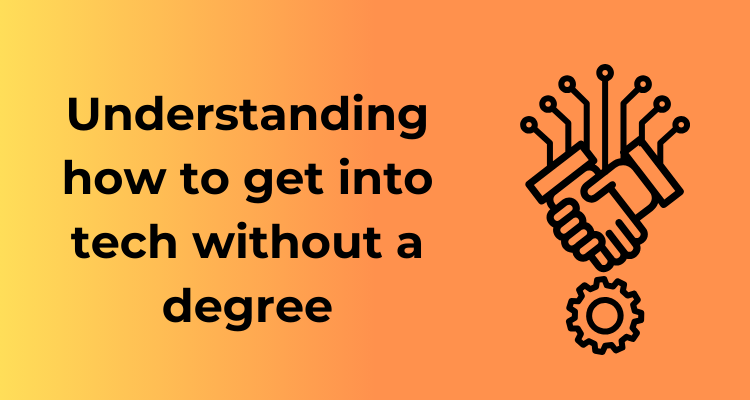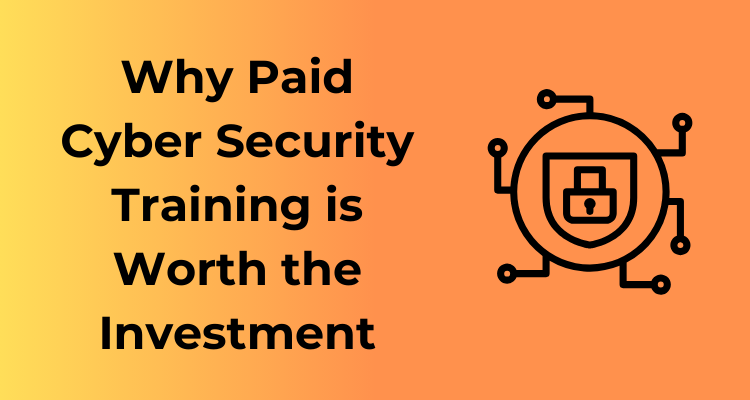Hey there! Let’s chat about something that’s shaping the modern world in ways you might not even realize—the digital divide. It sounds like tech jargon, but I promise it’s not as complicated as it might seem. I’m here to break it down for you into bite-sized, easy-to-handle pieces. Ready? Let’s go!
First things first, what exactly is the digital divide? In the simplest terms, it’s the gap between individuals, households, and entire communities who have easy access to modern technology (think smartphones, reliable internet, computers) and those who don’t. It’s not just about owning these items; it’s also about the quality of access, the knowledge to use them effectively, and maintaining connectivity in an ever-digitalized world.
Breaking Down the Digital Divide into Layers
Now, when we talk about the digital divide, it’s not one big issue—but rather a collection of smaller, interconnected ones. Let me walk you through this:
- Access Divide: This is the most obvious layer—who has (or doesn’t have) access to technology like computers, smartphones, or reliable internet?
- Skills Divide: Having technology is one thing, but knowing how to navigate the digital world confidently is another matter altogether.
- Usage Divide: Even when technology is available, not everyone uses it in the same way. Some use it for learning, working, or accessing essential services, while others might have limited exposure, sticking to entertainment or basic communication.
Why Should You Care About the Digital Divide?
Okay, so now you know what the digital divide is. But why does it matter? Well, it’s not just about missing out on TikTok or YouTube memes (although that can be a bummer). It directly impacts education, career opportunities, healthcare access, and even social connection.
In fact, according to recent research, billions of people worldwide—yes, billions—still lack access to internet connectivity. That means a large chunk of the population is unable to benefit from the digital tools and services that many of us take for granted.
Without addressing this divide, the gap between the “haves” and “have-nots” will only keep growing, further deepening inequities at both a personal and societal level.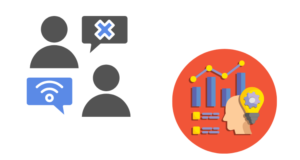
Key Symptoms of the Digital Gap You May Not Notice
If someone asked you to paint a picture of the digital divide, what would you imagine? A person in a rural area with no internet? Perhaps a family sharing one outdated computer? These are well-known examples, but the digital divide can be far more subtle than you might think. Let’s explore some key symptoms of this issue that often fly under the radar.
The Speed Struggle Is Real
Not all internet connections are created equal. While many people enjoy high-speed broadband, others are stuck with painfully slow connections. Can you imagine trying to attend a video call or stream an educational webinar while battling constant buffering? For those with slower speeds, this is a daily reality. Subpar connectivity makes it harder to access opportunities, a problem that often gets overlooked.
Lack of Digital Literacy
Have you ever walked someone through basic tech steps, like “how to attach a file”? That’s a small glimpse into digital illiteracy—a symptom not always linked to the digital divide but very much part of it. Many people, young and old, lack the skills to effectively use technology for work or education. This knowledge gap can severely limit someone’s ability to engage in today’s digital world.
Limited Device Access
Here’s a surprising fact: not everyone has a computer or smartphone at home. Some households share one outdated device among multiple family members, leading to issues like missed online classes or skipped job applications. For many, luxury items like tablets or the latest smartphone are simply out of reach, keeping them disconnected from the digital ecosystem.
The Homework Gap
Here’s a symptom that impacts children especially: the dreaded homework gap. Picture a student unable to complete assignments because they don’t have reliable internet or a device. While classmates can research, collaborate, and upload their projects with ease, these students are left trying to find free Wi-Fi or using pen-and-paper workarounds. Over time, this gap can have a serious impact on academic success.
The Language Barrier
The internet is overflowing with information, but it isn’t equally accessible to everyone. Language can serve as a hidden barrier. A significant digital divide exists for individuals who don’t speak or read the dominant languages used online, such as English. For these users, finding relevant, localized, and understandable content becomes an uphill battle.
Silenced in the Job Market
Today’s job applications often exist entirely online. If someone doesn’t have the tools or skills to create an email address, upload a résumé, or navigate a job portal, they face a huge disadvantage. This digital gap in employment opportunities often keeps certain populations underrepresented in the workforce.
Spot The Signs & Speak Up
So, why is it important to recognize these subtle symptoms? Because awareness is the first step to making a change. Start by watching for these signs in your community, workplace, or school. If you notice someone struggling with access or skills, consider ways to help—whether it’s sharing resources or connecting them to local initiatives. Remember, bridging the gap starts with understanding, and now you’re one step closer. Great job!
How Access to Technology Impacts Day-to-Day Life
Technology isn’t just a luxury or a nice-to-have—it’s a game-changer in many aspects of our lives. From education to healthcare, career opportunities, and staying connected, having access to technology can transform how we navigate the world. Let’s take a closer look at why access to technology is so crucial in shaping day-to-day life.
1.Education at Your Fingertips
Imagine trying to finish your homework or learn a new skill without the help of the internet. Pretty tough, right? Online resources—such as e-books, videos, and interactive lessons—have made education more accessible than ever. However, for those without proper internet access or devices, this wealth of information can feel completely out of reach. Having access to technology ensures that kids and adults alike don’t miss out on learning opportunities.
For example, during the global shift to online learning, students who lacked computers or internet connections struggled to keep up. This digital barrier can widen educational inequalities. It shows exactly why providing tech access is so important in creating a level playing field for all learners.
2.Better Healthcare Solutions
Did you know that access to technology can literally save lives? Telemedicine, health tracking apps, and online healthcare consultations have revolutionized how people manage their health. Yet, these innovations are only beneficial if you have the tech tools to use them.
For someone in a rural community without reliable internet, booking an online doctor’s appointment or accessing vital health information could be impossible. This gap in access to technology can mean delayed diagnoses and worsened health outcomes. Giving people the tools they need—whether it’s a smartphone, an internet connection, or basic tech training—can improve their quality of life significantly.
3.Job Opportunities and Economic Mobility
The job market has undergone a massive makeover thanks to technology. Platforms like LinkedIn, freelance websites, and job search engines have become essential tools for finding work. But here’s the catch—no internet, no access to these job opportunities.
Without technology, creating resumes, applying for positions, or growing a professional network can feel like climbing a mountain. Even careers in manufacturing or customer service now frequently require digital skills. Equalizing access to technology can open up doors for individuals looking to build better lives for themselves and their families.
4.Staying Connected with the World
Think about how often you use messaging apps, social media, or video calls to stay in touch with friends and family. Technology keeps us connected to our loved ones and the wider community, no matter where we are in the world.
For individuals without these tools, staying connected can become a challenge—particularly for the elderly who may rely on tech to avoid isolation. Bridging the digital divide can ensure that everyone, from grandparents to young learners, can stay socially engaged and informed.
Causes Rooted in Geography, Economy, and Education
Have you ever wondered why the digital divide exists in the first place? It’s not just about someone not owning a smartphone or a computer. There are deep-seated reasons why some people remain disconnected, and most of them are tied to geography, economy, and education. Let’s dive into these factors and see how they shape the divide.
Geography: The Power of Location
Where you live can heavily influence your access to technology and the internet. Think about rural areas or remote regions—it’s not uncommon for these places to lack essential infrastructure like high-speed internet or even consistent electricity. Imagine waiting five minutes for a webpage to load or having no connection at all! That’s the reality for many people.
On the flip side, urban areas generally have better access to advanced technology. Why? Because laying fiber-optic cables or installing cell towers in cities is easier, cheaper, and serves a larger population. But this leaves communities in rural or mountainous regions struggling to keep up. When your location determines whether you can Google something in seconds, there’s a clear gap.
Economy: The Technology Price Tag
Let’s face it—technology isn’t cheap. A decent laptop, a good smartphone, and a reliable internet connection can cost a small fortune. For low-income families, putting food on the table understandably comes before tech gadgets or monthly data plans.
And it’s not just individuals—whole economies can feel the pinch. Developing countries often lack the financial resources to invest in the infrastructure required to provide widespread internet access. This financial barrier is a big reason why some parts of the world lag behind in technology adoption.
Education: The Knowledge Connection
Ever heard the phrase “you don’t know what you don’t know”? That perfectly describes the role of education in the digital divide. Even if someone has access to the internet or a computer, they might not know how to use these tools effectively. Teaching digital literacy—like understanding how to conduct online research, apply for jobs, or stay safe online—is just as important as providing the tools themselves.
In many cases, schools in underserved areas lack the resources to teach these skills. Without proper education, even having the latest technology can feel like having a Ferrari without the keys—you’re not going anywhere!
Why This Matters
The combination of geography, economy, and education creates a complex web that keeps millions disconnected. And here’s the kicker: being left behind digitally often means being left behind in life. That’s why addressing these root causes is essential if we’re truly serious about closing the digital divide.
Food for Thought: What Can Be Done?
There’s no one-size-fits-all solution, but awareness is a starting point. Governments, businesses, and communities can collaborate to:
- Expand internet infrastructure to connect rural areas.
- Subsidize technology costs for low-income families.
- Support programs that teach digital literacy in schools.
Small steps like these can make a huge impact. Can you think of other ways to address these causes? It’s a problem we can solve together, one connection at a time.
Real-Life Examples of the Digital Divide Around the World
Let’s take a little tour around the world to see how the digital divide shows up in real life. This isn’t a theoretical issue—it affects people’s lives in education, health, and economic opportunities. By looking at specific examples, you’ll have a clearer picture of why this matters and how wide-reaching its impact truly is.
A Tale of Two Schools: Urban and Rural
One striking example of the digital divide can be seen in schools. Imagine a school in a bustling city, equipped with high-speed internet, laptops, and tech-trained teachers. Compare that to a rural school where internet connectivity is patchy, and there are no digital tools for students. Sadly, this is the reality in many parts of the world.
For example, in the United States—a technologically advanced country—you might think the digital divide is minimal. Yet, rural areas often lack robust broadband infrastructure, leaving students and teachers at a serious disadvantage. During the COVID-19 pandemic, this gap became glaringly obvious as students in underserved areas struggled to attend online classes.
Developing Nations Facing Hurdles
In developing countries, the divide is even more pronounced. Take the example of sub-Saharan Africa. While smartphones are becoming more widespread, millions of people still lack access to reliable internet or electricity to charge devices. In some regions, students have to walk miles to use a shared computer or access Wi-Fi in local libraries or cafés—if such options even exist.
In India, another country with significant challenges, there’s a deep rural-urban divide. Urban areas often have affordable access to digital technology, but rural regions remain underserved. For instance, farmers in remote areas may lack access to digital tools that could help them monitor weather conditions, select better crops, or access fair-market prices. This limits both their growth and income opportunities.
Gender Matters Too
The digital divide isn’t just about geography; it also impacts genders differently. In countries like Pakistan and Afghanistan, societal norms often restrict women’s and girls’ access to education and technology. This creates a double burden: not only are women being left behind in education, but they are also unable to participate in the growing digital economy.
Think of this: a young girl in a rural area who’s unable to access a laptop or smartphone misses out on learning coding, communication tools, or even applying for jobs online. The ripple effects of this divide last for generations because it stalls economic and social progress for half the population.
Island Nations and Connectivity
Let’s not forget small island nations. Places like Fiji and the Philippines face unique challenges in building internet infrastructure, as they’re dispersed across vast oceans. Slow and expensive internet impacts everything from education to ecommerce. For some, engaging with an increasingly online world feels like an impossible dream.
Why These Examples Matter
Each of these instances highlights how complex and multi-layered the digital divide is. It’s not just about having a smartphone; it’s about tapping into opportunities for learning, earning, and connecting. These real-life examples should act as a call-to-action for us all to advocate for better policies and solutions.
Bottom Line? These stories show that the digital divide is more than an abstract problem—it affects real people, every day, all over the world. By acknowledging these realities, we can begin to create solutions tailored to the unique challenges faced by different communities.
Policies & Initiatives That Have Made a Difference
The digital divide might be a daunting challenge, but over the years, governments, organizations, and initiatives worldwide have worked tirelessly to narrow the gap. Real change is happening thanks to innovative thinking, policy changes, and community-focused programs. Let’s dive into the policies and initiatives that have been game-changers in the fight against the digital divide.
1. Government Policies Driving Connectivity
Governments around the globe play a huge role in closing this gap. Many have created policies prioritizing access to technology for underserved populations. Curious what those policies might look like? Here’s a quick roundup:
- Broadband Expansion Programs: Several countries have made extending internet access a key goal. For instance, the U.S. introduced the Rural Digital Opportunity Fund, aiming to expand broadband in rural areas.
- Subsidized Internet Services: Programs like Canada’s Connecting Families policy offer affordable, high-speed internet to eligible low-income families.
- Education-First Initiatives: Nations like South Korea and Finland made significant investments in digitizing schools, ensuring that students receive their education through cutting-edge tools.
These policies set the stage for greater connectivity and highlight the importance of top-down solutions for systemic issues.
2. NGOs and Grassroots Efforts
Big government programs are awesome, but let’s not forget about the inspiring non-governmental organizations (NGOs) and grassroots movements! Many of these groups have made a direct impact by focusing on communities often left out of conventional systems. Some notable efforts include:
- One Laptop per Child (OLPC): This initiative provided affordable laptops to children in developing countries, giving them access to educational tools and resources.
- World Computer Exchange: Refurbished technology is donated to developing nations, allowing schools and youth to access the digital world without breaking the bank.
- Internet in a Box (IIAB): This is an offline server delivering educational content to remote communities without traditional internet access. Engineers at IIAB designed it to leapfrog connectivity challenges worldwide.
These efforts demonstrate how raw passion paired with creativity can combat even the trickiest barriers to inclusivity.
3. Private Sector Contributions
Technology itself is largely driven by private companies, and many of them have stepped up to bridge the gap. Here’s a spotlight on some impactful corporate efforts:
- Google’s Project Loon: This innovative project aimed to deploy high-altitude balloons to provide internet in remote regions. Talk about thinking outside the box!
- Microsoft Airband Initiative: Using TV white spaces, Microsoft works to deliver broadband to rural and underserved communities.
- Facebook’s Free Basics: By offering basic online services for free, this initiative has introduced millions to the digital universe, primarily in developing countries.
These programs reflect a growing recognition that technology giants have a moral imperative to ensure equitable access to the tools they create.
4. Global Partnerships and Visionary Goals
You know the saying, “It takes a village”? That’s very true here, too! Organizations like the United Nations rally international support to tackle the divide. The UN’s 2030 Agenda for Sustainable Development places universal and affordable internet access as a core target. Meanwhile, partnerships between local governments and international tech collaborations help boost effectiveness.
5. Why Continued Action Matters
The digital divide isn’t just about access to technology—it’s linked to education, healthcare, and economic opportunity. By supporting these policies and initiatives, we step closer to an equitable future where no one is left behind. The best part? You can get involved, too! Advocacy, donations, and even volunteering for such initiatives can amplify the difference they make.
Ready to imagine a more connected world? Keep cheering on and supporting these incredible efforts—they’re bringing us one click closer to progress.
Bridging the Divide: Practical Steps for Individuals & Communities
Let’s talk about something amazing—you! Yes, you, the reader. Did you know that by taking small actions, you can play a role in bridging the digital divide? Tackling this challenge might sound overwhelming, but with practical steps at the individual and community levels, it’s entirely possible to make a significant impact. Let’s explore ways to make this happen together.
Get Involved Locally
One of the best places to start is right in your community. Many local initiatives aim to boost digital literacy and expand access to technology, and they’re often looking for volunteers.
- Host Digital Literacy Workshops: If you’re tech-savvy, why not share your skills? Teaching someone how to send an email, navigate online job boards, or use educational resources online can be transformative.
- Donate or Recycle Devices: Got an old smartphone or laptop collecting dust? Consider donating it to local charities or programs that refurbish devices for those in need.
- Advocate for Public Wi-Fi Access: Reliable internet isn’t a luxury—it’s a necessity. Push for increased access in community centers, libraries, and public spaces.
Support Expansion of Digital Resources
Individual actions are fantastic, but collective efforts create widespread impact. Communities thrive when resources are made widely available.
- Promote Community Tech Hubs: Ever heard of shared spaces with free internet and accessible devices (like libraries or local nonprofit organizations)? These community tech hubs are lifelines for those lacking personal access to technology.
- Fund or Support Educational Grants: Students without personal devices or connectivity often fall behind. Support local fundraisers or encourage your school board to expand technology lending programs.
Spread Awareness About Affordable Options
You’d be surprised how many people are unaware of affordable tech solutions. Highlight these initiatives whenever you can:
- Discounted Internet and Devices: Many ISPs (Internet Service Providers) have low-cost options for qualifying families.
- Government Programs: Programs like the Affordable Connectivity Program (or equivalents in your region) can make a huge difference. Share info about such opportunities with neighbors, friends, and acquaintances.
Embrace Lifelong Learning
One superpower you can cultivate is ongoing education about technology. The more you know, the better equipped you are to share knowledge and guide others.
- Sign up for free tech courses online (platforms like Coursera and Khan Academy often have accessible resources).
- Learn how to teach technology in simple, digestible ways for all age groups.
Empower the Next Generation
Lastly, let’s not forget about the kids. Empowering young people to understand and use technology responsibly can have a ripple effect for years to come. For example:
- Start coding clubs in schools and community centers.
- Encourage mentorships where older students help younger ones with digital skills.

